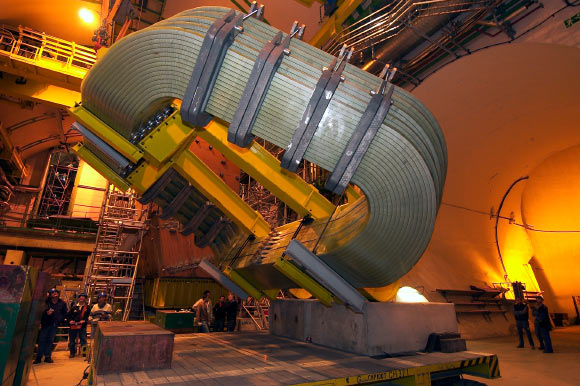Physicists from CERN’s Large Hadron Collider beauty (LHCb) experiment have found two never-before-seen particles, as well as hints of another new particle, in high-energy proton collisions.
The newly-discovered particles, named Σb(6097)+ and Σb(6097)–, are predicted by the quark model, and belong to the same family of particles as the protons that the Large Hadron Collider (LHC) accelerates and collides: baryons, which are made up of three quarks.
But the type of quarks they contain are different: whereas protons contain two up quarks and one down quark, the new particles are bottom baryons composed of one bottom quark and two up quarks or one bottom quark and two down quarks respectively.
The LHCb researchers found these particles using the classic particle-hunting technique of looking for an excess of events, or bump, over a smooth background of events in data from particle collisions.
In this case, they looked for such bumps in the mass distribution of a two-particle system consisting of a neutral baryon called Λb0 and a charged quark-antiquark particle called the π meson.
“We found two bumps corresponding to the Σb(6097)+ and Σb(6097)– particles, with the whopping significances of 12.7 and 12.6 standard deviations respectively; five standard deviations is the usual threshold to claim the discovery of a new particle,” they said.
“The 6097 in the names refers to the approximate masses of the new particles in MeV, about six times more massive than the proton.”
Named Zc–(4100), the third particle is a possible candidate for a different type of quark beast, one made not of the usual two or three quarks but of four quarks (strictly speaking, two quarks and two antiquarks), two of which are heavy charm quarks.
Such exotic mesons, sometimes described as tetraquarks, as well as five-quark particles called pentaquarks, have long been predicted to exist.
“Searching for structures in the decays of heavier B mesons, we detected evidence for Zc–(4100) with a significance of more than three standard deviations, short of the threshold for discovery,” the LHCb scientists said.
“Future studies with more data may be able to boost or disprove this evidence.”
The new results are described in two papers posted online at arXiv.org and submitted for publication to the European Physical Journal C and the Physical Review Letters.
Source: Sci News

































Leave a Comment
You must be logged in to post a comment.